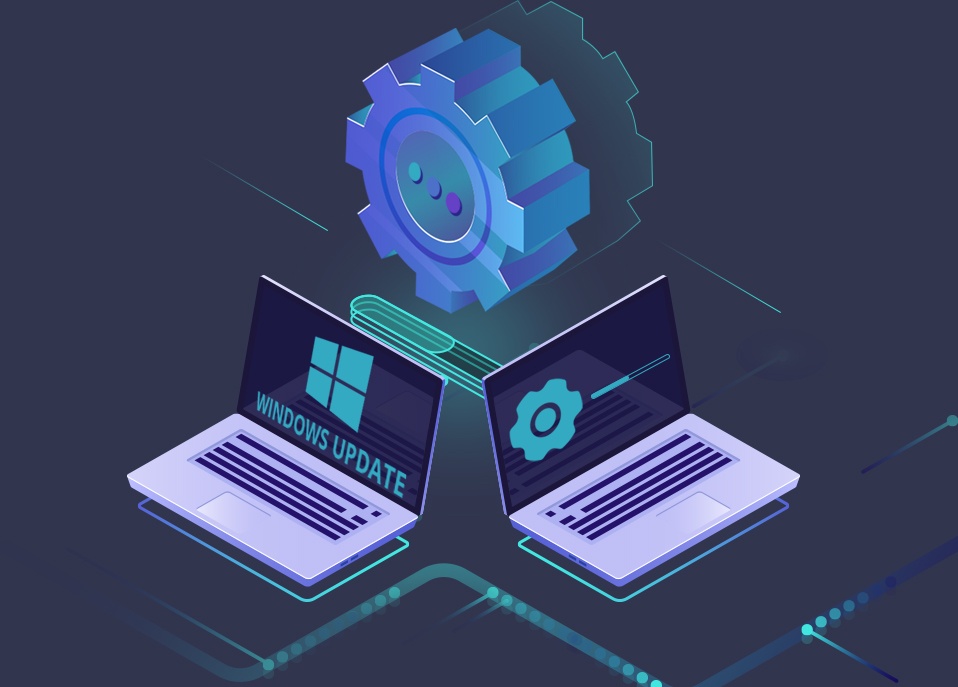Chipset drivers are a critical component of any computer system. They are responsible for controlling the communication between various components, such as the processor, video card, hard drives, PCI devices, and system memory. Without these drivers, various components may not work correctly, or Windows may try to install generic drivers that do not work as well as those provided by the motherboard manufacturer.
It is essential to keep your chipset drivers up to date, as outdated drivers can cause poor system performance, crashes, and other issues. To update your chipset drivers, you will need to visit the website of your motherboard manufacturer and download the latest drivers for your specific motherboard model.
Once downloaded, you can install the drivers by running the installer file. The installation process may vary depending on your motherboard manufacturer and model, but typically, you will need to follow the on-screen instructions and restart your computer once the installation is complete.
AMD has recently released a new set of chipset drivers for Ryzen, which promises to improve performance and power efficiency through optimized Windows 10 power management and scheduler. These new drivers are specifically designed for Ryzen processors and can provide a significant performance boost for gaming and other demanding tasks.
Chipset drivers are critical for maintaining optimal system performance and stability. It is essential to keep your drivers up to date and ensure that you are using the latest version provided by your motherboard manufacturer. AMD’s new Ryzen chipset drivers are a great example of how updated drivers can provide significant performance improvements for specific hardware configurations.

The Importance of Chipset Drivers
Chipset drivers are very important for the overall performance of your system. They act as a bridge between different hardware components in your computer, such as the processor, video card, hard drives, and system memory. By keeping these drivers up to date, you can ensure that your system runs smoothly and efficiently. Outdated chipset drivers can cause system instability, crashes, and a general slowdown in performance.
Moreover, updating your chipset drivers can also improve the functionality of your hardware components, such as fixing bugs, enabling new features, and providing better compatibility with the latest software and operating systems. In addition, some chipset drivers also contain security updates and patches that can protect your system from potential vulnerabilities and threats.
Therefore, it is highly recommended to regularly check for and install the latest chipset drivers for your system to ensure optimal performance and security. You can either download them manually from the manufacturer’s website or use a driver update tool to automate the process.
Consequences of Not Installing Chipset Drivers
When you don’t install chipset drivers on your system, you may face various issues such as hardware malfunction, system instability, and poor system performance. Chipset drivers are responsible for controlling the communication between the hardware components and the operating system. Without these drivers, the hardware devices can’t function properly, and their performance may be suboptimal.
Furthermore, the operating system may try to install generic drivers, which may not be compatible with your system’s hardware. This can lead to conflicts and further performance issues.
Therefore, it is highly recommended to install the chipset drivers provided by the motherboard manufacturer. These drivers are designed specifically for your system’s hardware configuration and can ensure optimal performance and stability.
What Are the Benefits of Installing a Chipset Driver for Windows 10?
A chipset driver is a software program that enables the communication between the chipset components of a computer system and the operating system, such as Windows 10. The chipset is a collection of integrated circuits that are responsible for controlling the flow of data between the different components of the motherboard, such as the processor, memory, and peripherals. The chipset driver ensures that all the components are working together efficiently and effectively. Updating the chipset driver can improve system stability, performance, and security. In Windows 10, the chipset driver can be downloaded and installed from the manufacturer’s website or through the Device Manager. It is recommended to keep the chipset driver up-to-date to ensure the smooth functioning of your computer system.
The Impact of Chipset Drivers on Performance
Chipset drivers can improve performance by optimizing the communication between the CPU and the motherboard, and by providing specific optimizations for the CPU’s architecture. In the case of AMD’s new Ryzen chipset drivers, they have been designed to improve performance and power efficiency through optimizations to Windows 10’s power management and scheduler. By doing so, the drivers can help the CPU to operate more efficiently, reducing power consumption and improving performance in tasks that require more processing power. Additionally, chipset drivers can provide bug fixes, stability improvements, and new features that can enhance the overall performance of a system. However, it’s important to note that the impact of chipset drivers on performance can vary depending on the system and the specific drivers being used.
Conclusion
Chipset drivers are a crucial component in ensuring that your system runs smoothly and efficiently. They are responsible for facilitating communication between various hardware components in your system, including the processor, video card, hard drives, and system memory. Failing to update these drivers can result in poor system performance and compatibility issues. Therefore, it is important to keep your chipset drivers up to date to ensure optimal system performance. With the recent release of AMD’s Ryzen chipset drivers, users can expect improved gaming performance and power efficiency through clever optimizations to Windows 10’s power management and scheduler. By staying on top of chipset driver updates, you can ensure a better overall computing experience.








